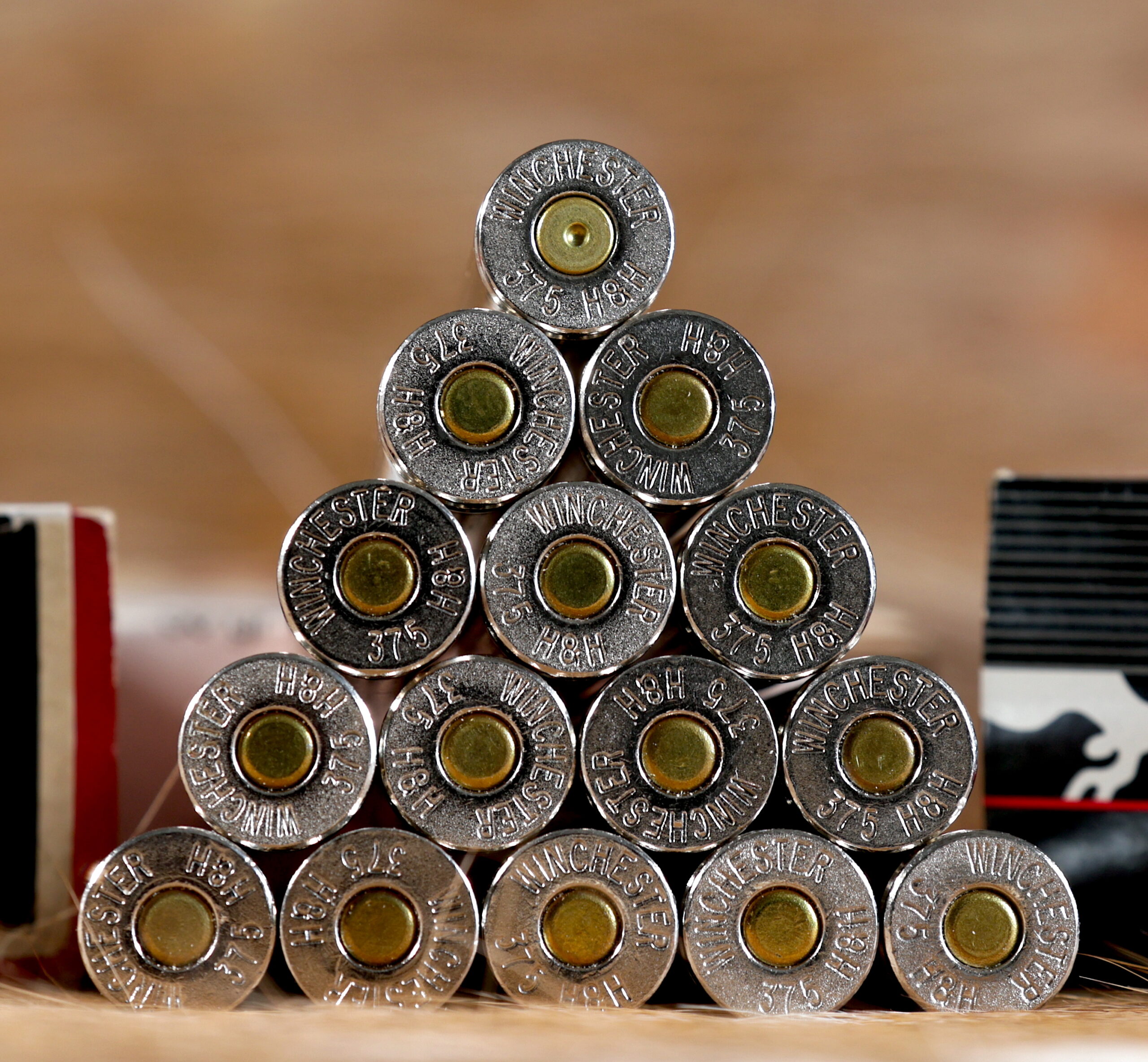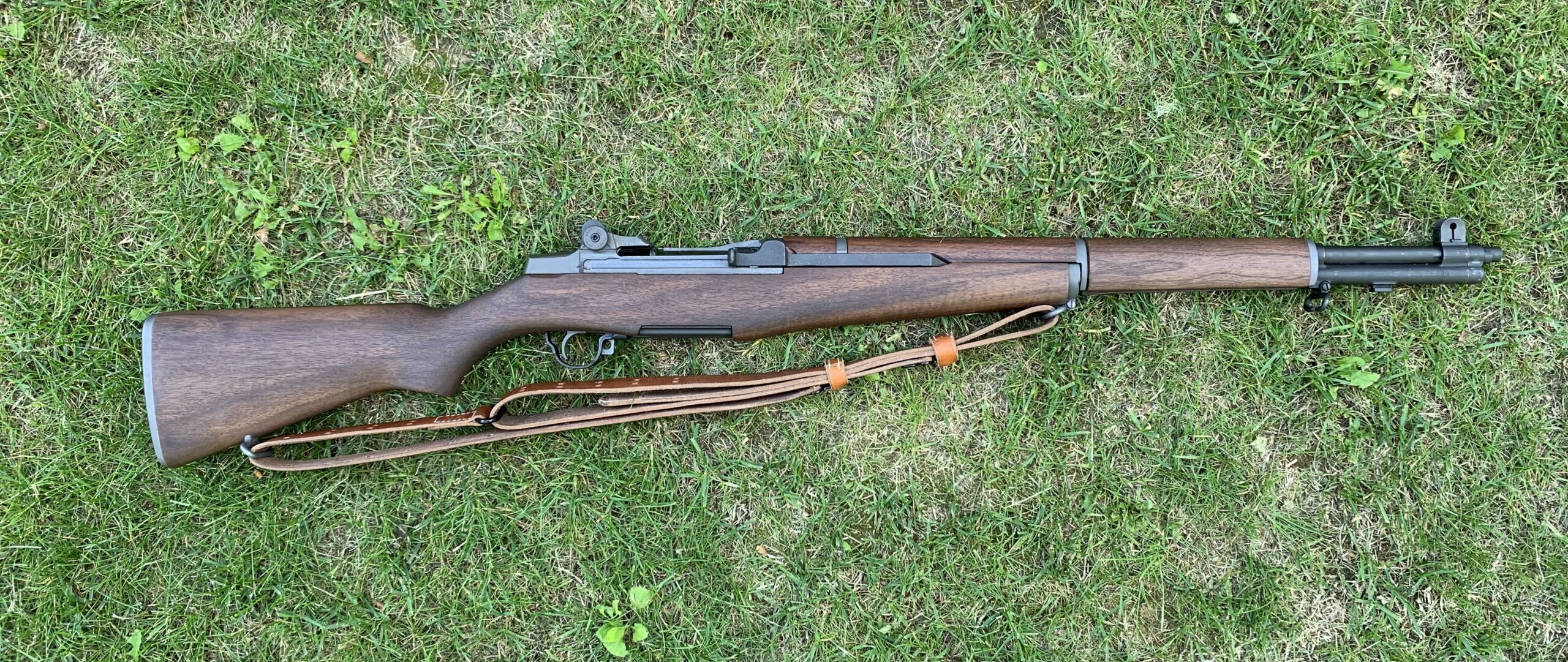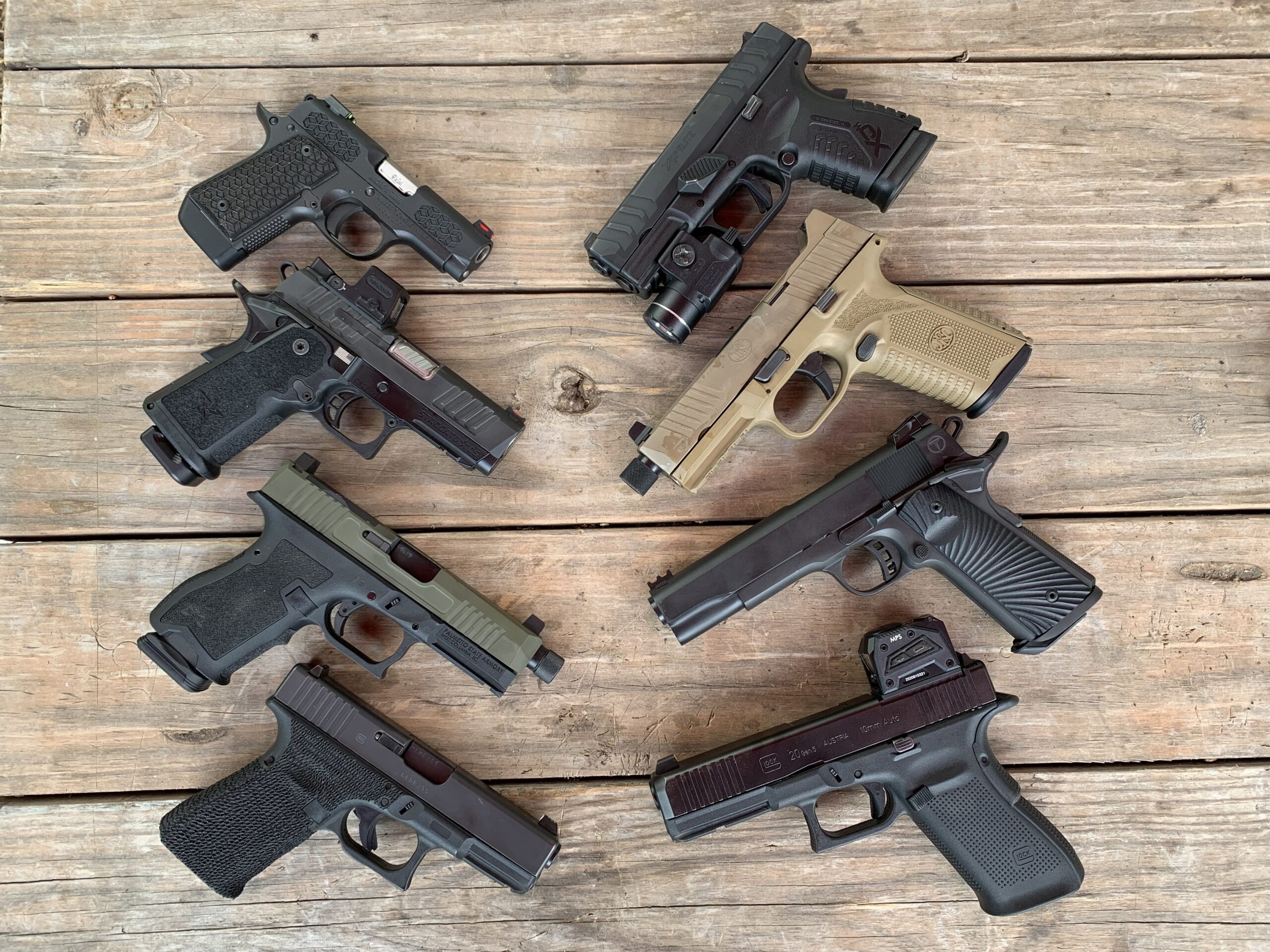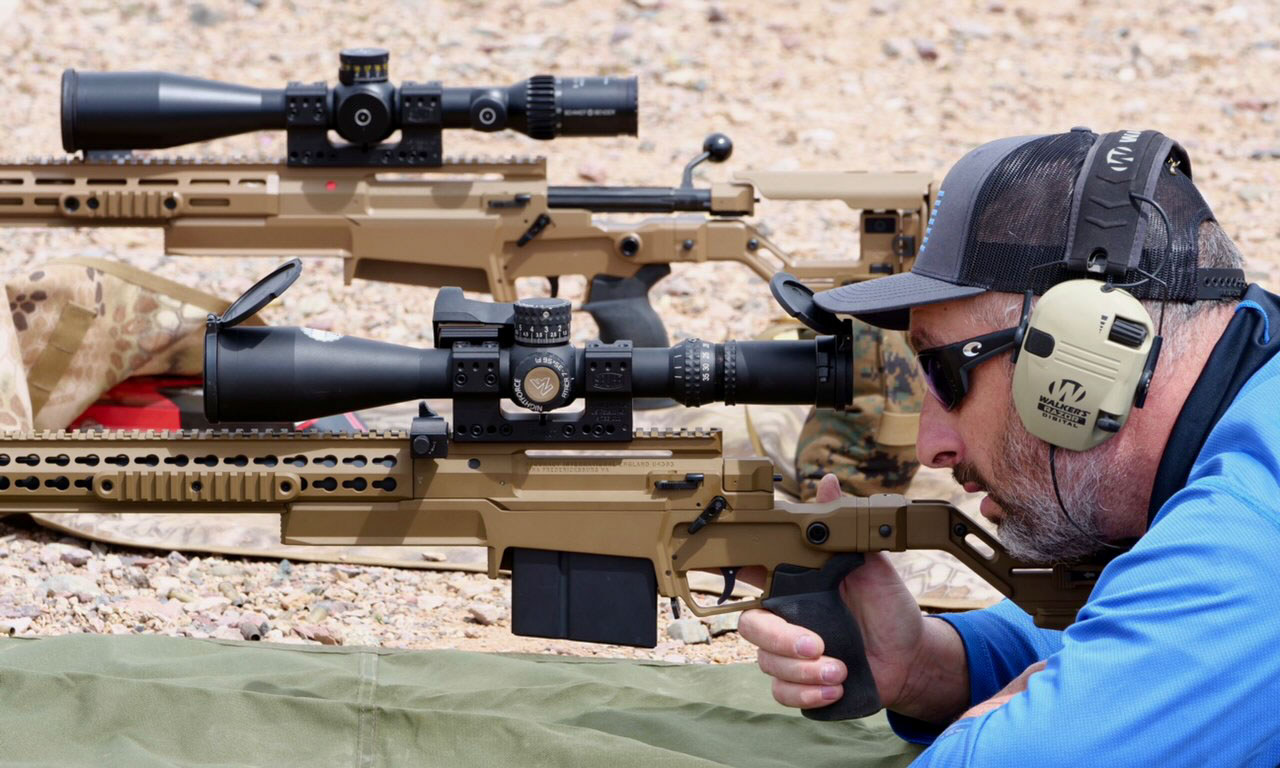5 of the Best All-Around, Big-Game Hunting Cartridges
The most common, versatile, and effective cartridges for big game hunting

We may earn revenue from the products available on this page and participate in affiliate programs. Learn More ›
Did you know there are more than 125 centerfire cartridges larger than .24-caliber suitable for big-game hunting? Asking anyone to declare the top five all-around loads in this category is like ranking the top five ice cream flavors.
But before I get too many nasty Facebook comments, know this: This list is not cast in stone! You may indeed have better options. My selections may not make sense for your pursuits. But I’ll try to make my case for these five loads based on this criterion:
- Powerful enough for (nearly) everything. (And some of these are optimized for dangerous game, so overkill for smaller stuff like deer.)
- Reasonable cost. More than a 50-round box of .22 LR, but less than a 20-round box of .470 Nitro Express.
- Reasonable availability, both in rifles and ammo. This doesn’t mean you’ll find them in every small town gas station or hardware store, but any business focused on hunting guns and gear should have them or be able to easily order them.
- Decent Range. We’re not advocating 1,000-yard game shooting, but given today’s precision rifles, ammo, scopes, and laser rangefinders, we should at least have the reach for 500 yards IF the shooter is capable.
- Forbearance and forgiveness. For the author, not these cartridges. My choices at the low and high ends are a bit silly for game animals at the opposite ends (you don’t need a .416 Rem. Mag. to kill a whitetail). But to address all big game, I have to provide options at the extremes.
Here are the best all-around ammo options for big-game hunters.
6.5 Creedmoor

I’ll lose half my audience with this one, but be realistic. This light-kicking round matches the performance of the famous 6.5×55 Swede that has been sorting out deer, caribou, moose and even brown bears since the 1890s. And it’s widely chambered in just about every firearm — or at least firearm action — being built. Everyone and his brother’s dog loads it with bullets of every stripe from 90-grains to 147-grains.
Because so many precision competition shooters work the 6.5 Creedmoor, ammunition and rifles are usually built carefully and precisely for maximum performance. Who doesn’t value that? Yes, many other 6.5mm cartridges are faster, even some short-actions versions. But none is as ubiquitous, inexpensive, and available.
Recoil is soft with this little round. Not as soft as a .243 Winchester or 6.5 Grendel, but you’re driving heavier bullets downrange. Speaking of which, those bullets are the key to the Creedmoor’s performance. When you shoot 140-grain and heavier, .264-inch diameter, low-drag-shape bullets, you’re working with B.C.s in the low .6s. This means you minimize wind deflection. And that’s the hardest part of trajectory to predict.
If you want to bad-mouth the Creedmoor, we can cite its muzzle velocity. Figure 2,700 fps with those 140-class bullets in most factory ammo. Folks, we had cartridges throwing 140-grain bullets 3,000 fps almost 100 years ago. This is not fast! But with laser rangefinders to nail the distance and dialing turrets or ballistic compensating reticles to set the holdover…it’s fast enough.
That leads us into to energy. The widely used 143-gr. Hornady ELD-X at 2,700 fps emerges carrying 2,315 foot-pounds energy. For comparison, the .30/06 pushing a 150-gr. 3,000 fps starts with 2,998 f-p. Thanks to its high B.C., the Creedmoor bullet keeps more than 1,000 f-p energy clear out at 700 yards. At that distance the .30/06 slug is down to 935 f-p. In short, this is what many consider adequate energy for deer-sized game. I don’t think it’s going to merely tickle an elk, either. But then I don’t advocate shooting elk at 700 yards.
One category for which there is no mathematical, concrete measurement is bullet diameter’s contribution to lethality. Does, as some insist, a wider bullet kill significantly faster or better than a narrower one? Even if the narrower one is carrying more energy? Tough call. Half a century of big game hunting tells me that small differences in bullet diameter (caliber) don’t make a significant difference in terminal performance. A .264-inch bullet weighing 140-grains and carrying 2,000 fps energy on target can’t be that less effective than a .277-inch or even .284-inch bullet of similar weight carrying equal or less mass. Bullet’s expand, bend, twist and mangle to such a degree that original diameter becomes immaterial for anything but the diameter of the entrance hole.
At any rate, the 6.5 Creedmoor, like the 6.5×55 Swede, has been used to take everything up to and including moose and eland. It is legal in most jurisdictions. Its precision bullets, rifles, and low recoil make it deadly accurate for most shooters. And one thing is certain. The right bullet in the right place beats the wrong bullet in the wrong place.
.308 Winchester

It pains me to list this one because I know the 7mm-08, .260 Rem., 6.5 PRC and many others are ballistically superior, but the .308 Winchester is so middle-of-the-road versatile, ubiquitous, and inexpensive that I have to include it. It throws the same bullets as the .30/06, just 100 fps more slowly (more or less). A deer, elk, or moose won’t be able to tell the difference, trust me.
Arguing in the boring .308 Winchester’s favor is its short-action. Maximum Cartridge Overall Length is just 2.8 inches, a half inch shorter than the standard, .30/06 length. Properly loaded, the .30/06 bests the .308 by 100 to 200 fps depending on bullet weight. It handles those heavier than about 165 grains more efficiently. Nevertheless, when it comes to taking game, I have to admit the .308 Win. can do it all. It can handle 100-grain through 200-grain bullets, but it’s perhaps at its best with 165-grain bullets. But even when pushing 200-grain slugs a mere 2,400 fps, it cranks out 2,560 f-p energy and retains 1,876 f-p at 200 yards. Not many moose are going to shrug that off. (And many factory loads and handloads can boost that muzzle velocity by 100 fps or so.)
Another nice .308 attribute is reasonable recoil levels (for a .30-caliber) in fairly short, light, handy rifles. The short-action should cut a half-inch of length and 4 ounces of weight from the typical hunting rifle. The 48-grains or so of powder in a .308 usually burns completely in 22 inches of barrel, often 20 inches depending on burn rate. In a 7-pound rifle, then, a 165-grain bullet at 2,800 fps would hit you with about 21 f-p of recoil energy at a velocity of 14 fps.
Zero the above load for its maximum point blank range on an 8-inch target and you can hold dead-center out to 310 yards and hit the vitals. Pretty accommodating. As for that 500-yard measuring stick, this 165-grain bullet should still be carrying 1,340 f-p energy at 1,900 fps.
Other factors arguing in the .308’s favor are variety and low cost of ammunition, good to excellent barrel life, and good to excellent accuracy (because so many rifles and factory loads are built to match-grade standards.) Most rifle actions including lever, pump, break, falling block, auto-loading, and bolt are chambered for .308.
You can’t go wrong with the old .30/06 here either. Ditto the 7mm-08, which actually outperforms the .308 ballistically by a slim margin. The truth is there are a lot of cartridges in this general class that match or beat the .308 Win., but none is as common. They might be better in one small category: legality. In a few countries the .308 is not allowed to be imported for hunting because it is a common military cartridge (7.62 NATO.)
.300 Win. Mag.

Despite unrelenting competition from new and ever more powerful or convenient .28- and .30-caliber rounds, this old warhorse maintains its stance atop the mountain because of its versatility. It’s the .308 Winchester and .30/06 on steroids. It pushes the same .308-inch bullets, but 300 to perhaps 500 fps faster. That speed reduces drop and wind deflection dramatically while adding piles of punch at all distances. With the same 165-grain bullet the .300 hits harder at 250 yards than the .308 Win. does at the muzzle. MPBR for the 8-inch target is nearly 60 yards farther than the 308 Win.
Clearly the .300 Win. Mag’s advantage is significant, which is why it’s been such a strong performer around the world since its hatching in 1963. The price for this performance is a heavier rifle, longer action, longer barrel (usually,) shorter barrel life, more expensive ammunition, and more recoil. All of this suggests the average deer hunter who hopes to hunt bigger game just a time or two over the years probably doesn’t need what many consider the .300 magnum’s overkill. Some 3,380 f-p of energy slapped against the side of a whitetail at 100 yards seems a bit much. Add a fairly soft bullet as the punching agent and you can (and probably will) end up with significant meat damage. Handloaders solve that by “loading down” to 308 Win. power levels. Some factory ammo is offered in reduced loads, too. This also tames recoil. In fact, a .300 Win. Mag. at .308 Win. muzzle velocities is going to kick even less because chances are the .300 rides in a rifle a pound or more heavier. An 8-pound .300 Win. Mag. spitting a 165-grain bullet 3,250 fps from a 24-inch barrel should caress your shoulder with 32 f-p energy at 16.3 fps recoil velocity. You’re not going to sleep through that one. But then neither is your elk, moose, kudu, or eland fairly hit.
To take full advantage of the .300s potential you should toss something heavier like a 190-grain or 200-grain high B.C. bullet at around 2,850 fps. Figure a B.C. of about .600 and your MPBR should be about 320 yards. Not as far as the 165-grain option, but wind deflection will be an inch or so less at 300 yards, energy greater by some 200 f-p. Recoil with the 200-grain slug will jump to around 34.7 f-p at 16.7 fps.
Regardless of the bullet you choose, 500-yard velocity and energy remain more than sufficient. Count on about 1,800 f-p and 2,200 fps.
Rifle options in .300 Winchester Magnum are less than in 308 Win. or 6.5 Creedmoor, but in addition to many, many bolt-actions, there are some autoloaders, single-shots, levers, and pumps (Browning BLR and BPR.) The .300 was engineered from a shortened .300 H&H Magnum case, so it fits .30/06-length actions. It’s belted, but that hasn’t stopped it from winning 1,000-yard target competitions. It’s been a favorite of military snipers as well as guides in bear country. Drive a rugged, controlled-expansion 220-grain round nose 2,700 fps and few bears are getting past it.
Yes, more powerful .300s like the .300 Weatherby Magnum, 30 Nosler, .300 PRC, .30-378 Wby. Magnum, .300 RUM — and even minimally weaker ones like .300 WSM, .308 Norma Magnum, and .300 RCM are reasonable options to the .300 Win. Mag. Some fit short actions, some true magnum-length actions, but none are as widely available in various rifle and ammo brands. In this power range I can also make a case for the 7mms from 7mm Rem. Mag. on up, given today’s superior 175-grain and heavier controlled expansion bullets. But, again, the .300 Win Mag wins because of its universal distribution.
.375 H&H

This is another old pounder I’d like to brush off, but can’t. Like the .308 Winchester, it’s too common, too available, and too effective. Of course this isn’t your ideal deer cartridge or even elk, moose, etc. But it’ll do them in just fine while lowering your stress level around brown bears, lions, Cape buffalo, and elephants.
Holland & Holland’s belted magnum has been and continues to be accurately described as the best all-round cartridge when “all-round” means suitable for every legal big game animal, including the dangerous ones. While everything that stomps, bites, claws and gores has been sent to perpetual dreamland by the 7×57 Mauser, .30/06 and even .22 LR (yes, there is at least once documented incident of a villager punching the right pachyderm artery and ending the oversized garden marauder,) few hunters wish to bet their safari dollars on those smaller options. Besides, the .375 H&H is the mandatory minimum in some places for some species.
The .375 is the original belted magnum from which most subsequent belted magnums sprang. The belt has nothing to do with harboring pressures. It’s there to headspace the rimless cartridge. Nonetheless, the .375 is SAAMI rated for 62,000 psi chamber pressure. Ignite 78 grains of W760 powder behind a 300-grain bullet and it should leap free from a 24-inch barrel doing 2,500 to 2,600 fps, fast enough to churn out 4,400 to 4,500 f-p of kinetic energy. Zero this freight hauler dead on at 220 yards and you’ll hit 3 inches high at 100 yards, 4 inches low at 270-yards where energy will still be 2,750 f-p. And that’s with a rather ordinary B.C. bullet.
While a trajectory like that seems more than adequate for hunting most big game, .375 H&H handlers who want more reach are invited to fling 260-grain bullets. Something like a Nosler AccuBond at .473 B.C. leaving home doing 2,750 fps and zeroed at 260 yards won’t drop 4 inches below point of aim until 315 yards where it’ll be punching with 2,805 f-ps. I realize that 315 yards isn’t considered long range these days, but, seriously, how many animals have you engaged beyond that? Bullet deflection in a 10 mph right angle breeze at 300 yards would be around 7 inches. I can work with that.
The .375 H&H negatives are recoil, cost, and rifle weight and length. Forget about sneaking through the Maine woods with your quick little brush rifle. Your .375 H&H wants a bit of room to stretch its full magnum-length action and 24- to 26-inch barrel. A 9-pound rig would be considered light, and you’d feel that 260-grain bullet launch as 42 f-p of shoulder jolt moving 17.3 fps. The 300-grain version would hit you with 46.2 f-p at 18.2 fps. Clearly, this is not the outfit for the feint of heart or weak of arm. Ammo costs are going to more than double what you’d pay for .308 Winchester, probably 30% to 50% more than .300 Win. Mag.
Bluntly stated, you pay the price for .375 H&H punch. Of course there are alternatives. The 9.3×62 Mauser is one of them, but where do you find those rifles and that ammo in the U.S.? It’s possible, but not easy. The .375 Ruger is a standard-length option the ballistic equal of the old H&H, but, again, guns and ammo are not common. The .375 RUM and .378 Wby. Mag. will make your teeth hurt just pronouncing them. The little 35 Whelen is a weaker option that leaves you needing more to qualify for the dangerous game minimum in some jurisdictions, so why try? It’s a good option in North America, however, as is the .338 Win. Mag., a wonderfully effective round caught smack between the .300 Win. Mag. and .375 H&H. For its size and belt, the old 375 H&H remains at the top of this category.
Read Next: The Most Iconic Rifles and Cartridges from African Safaris
.416 Rem. Mag.

With this class we leave the realm of mere mortals to join the land of giants. No beasts short of elephant and ornery Cape buffalo justify a .416 Rem. Mag. or any of its associates. But don’t tell that to the Alaska fishing guide who discovers 1,400 pounds of fanged and clawed brown bear erupting from the alders at 30 feet. A “bearly” enjoyable encounter like that makes even a 400-grain .416 bullet at 2,500 fps seem underpowered. It’s not. That rock is packed with 5,550 f-p of kinetic energy. For dangerous game up close, you’d probably want to zero this baby for 100 yards, but since we’re offering this as a great big game round, let’s dive a little deeper.
Zero 3.7 inches high at 100 yards and you never climb higher than 4 inches above point of aim. You’re dead on at 232 yards, 4 inches low at 273 yards. Yes, that seems a crazy long distance for a fairly blunt, 400-grain bullet, but weight is a big part of B.C. and this one is packing the weight. But is it sufficient to offset velocity loss at 500 yards? According to my ballistic calculator, it is.
At 500 yards, the .416 Rem. Mag. will still be humping 2,087 f-p energy at a surprising 1,533 fps. This information might have you asking “so what?” Who’s going to engage long range deer, caribou, elk, sheep, or anything else with a 9- to 10-pound, 24-inch barrel, long-action .416 Rem. Mag? Well, my friend Tia Shoemaker for one. This 110-pound wisp of a woman (a professional bear guide in Alaska) packs a custom .416 Rem. Mag. for all her work. She used it to take her first Dall’s ram. So I don’t want to hear any more whining from you former linebackers and 250-pound power lifters. If you can’t take the punch, see the 6.5 Creedmoor above.
So now you probably want to know just how much punch we’re talking about. In a 9-pound rifle, you will get 69.6 f-p of free recoil coming back at 22.3 fps.
Numbers like these limit the popularity of the .416 Rem. Mag. and it’s ilk. This powerhouse is another offshoot of the .375 H&H, the case merely necked up to take the .416 bullet and the shoulder sharpened to 25 degrees. There go your prices, magnum length action rifles, bolt-actions, and falling blocks. High price ammo is unlikely to be found at the local shopping mart or mom-and-pop hardware store. But to the man or woman who dreams of hunting Alaska and Africa it’s a fine option.
Do know that, even if you do train to easily handle this degree of recoil, it is cumulative. While test-driving a .416 Rem. Mag. 30 years ago and running it hard, I noticed a headache coming on after 20 rather rapid fire rounds. This is not a high-volume practice rifle. But when the animal of your lifetime is on the line, it’s the one you like to have loaded, locked, and ready.
Once in this realm you’re allowed to consider .416 Rigby, .416 Ruger, .450/400 Nitro Express, .458 Win. Mag., etc., but none are as easy to find and work with as the Rem. Mag. Ammo costs will kill you any way you go.


